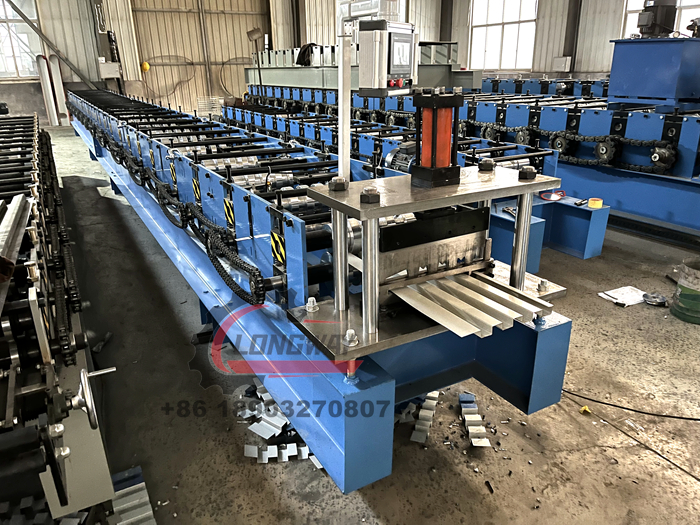Factories Producing Standing Seam Roll Forming Machines for Efficient Metal Roofing Solutions
Understanding Standing Seam Roll Forming Machine Factories
In the realm of modern construction and architectural design, the standing seam roofing system has established itself as a popular choice among both builders and property owners. This preference is largely due to its durability, aesthetic appeal, and excellent weather resistance. At the heart of this roofing innovation lies the standing seam roll forming machine, a sophisticated piece of equipment essential for producing the metal panels used in these roofing systems. This article delves into the intricacies of standing seam roll forming machine factories, exploring their operations, benefits, and impact on the industry.
What is a Standing Seam Roll Forming Machine?
A standing seam roll forming machine is a specialized piece of machinery used to create metal panels with vertical seams that interlock. These seams elevate the panels above the roof deck, allowing for a sleek, continuous appearance while providing effective water drainage. The machine processes metal coils, shaping them into the desired profile by passing them through a series of rollers. The final product is not only robust and weather-resistant but also lightweight, making it an ideal choice for various building types.
The Role of Factories in Production
Standing seam roll forming machine factories are pivotal in the manufacturing process of these roofing panels. They typically feature large-scale operations equipped with advanced technology to ensure efficiency and precision. Key components of a standing seam roll forming machine factory include
1. Material Handling Factories must manage large metal coils efficiently. Effective handling systems are essential for feeding the coils into the forming machines without damaging them.
2. Roll Forming Machines These are the heart of the factory, where the actual shaping occurs. Depending on the desired panel profile, various types of roll forming machines may be employed, including those designed specifically for standing seam systems.
3. Cutting and Finishing Stations Once the panels are formed, they undergo cutting to achieve the correct lengths. Additional finishing processes may include surface treatment, such as painting or coating, to enhance durability and aesthetic appeal.
4. Quality Control Ensuring that the panels meet industry standards is crucial. Factories employ rigorous quality control measures at multiple stages of production to detect any issues early in the process.
standing seam roll forming machine factories

Advantages of Standing Seam Roll Forming Machines
1. Customization One significant advantage of using these machines is the ability to produce customized panels tailored to specific architectural designs. Manufacturers can adjust the machine settings to create unique profiles based on customer requirements.
2. Efficiency Roll forming is a rapid production method, allowing factories to produce large volumes of panels with minimal waste. The automation involved in setting up and operating these machines significantly reduces labor costs and production times.
3. Precision Advanced roll forming technology ensures that the dimensions and profiles of the panels are consistent, which is crucial for proper installation and performance of the roofing system.
4. Sustainability The use of metal in roofing systems is often considered more sustainable than traditional materials. Many standing seam roll forming machine factories focus on utilizing recyclable materials, thereby reducing environmental impact.
The Industry Impact
Standing seam roll forming machine factories are becoming increasingly important in the construction industry. As the demand for energy-efficient, aesthetically pleasing, and durable roofing systems grows, these factories are positioned to play a vital role in supplying the necessary materials. Moreover, the adoption of advanced manufacturing technologies, such as automation and IoT integration, is further enhancing production capabilities and efficiency.
Conclusion
In conclusion, standing seam roll forming machine factories are critical to the modern construction landscape. They not only provide the essential equipment for producing high-quality roofing materials but also contribute to the overall efficiency and sustainability of the building process. As the industry continues to evolve, these factories will likely remain at the forefront, driving innovation and meeting the diverse needs of architects, builders, and property owners alike. The combination of technology and craftsmanship in standing seam roll forming machines ensures that the future of roofing systems is not only bright but also sustainable and resilient.
-
Roof Panel Machines: Buying Guide, Types, and PricingNewsJul.04, 2025
-
Purlin Machines: Types, Features, and Pricing GuideNewsJul.04, 2025
-
Metal Embossing Machines: Types, Applications, and Buying GuideNewsJul.04, 2025
-
Gutter Machines: Features, Types, and Cost BreakdownNewsJul.04, 2025
-
Cut to Length Line: Overview, Equipment, and Buying GuideNewsJul.04, 2025
-
Auto Stacker: Features, Applications, and Cost BreakdownNewsJul.04, 2025
-
Top Drywall Profile Machine Models for SaleNewsJun.05, 2025








